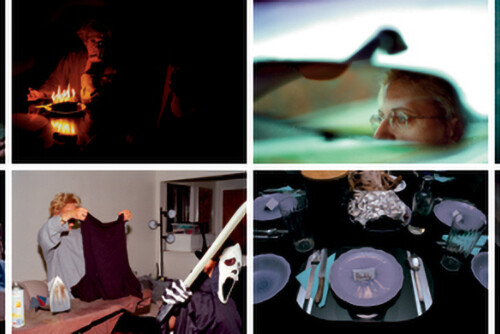On the call to witness, and the standing ovation:
AP: I’m thinking about the call to witness. Theater is often talked about as a kind of witnessing. But to witness is not an easy or comfortable event. To witness is in some sense, to ultimately be accountable to what and whom you do not know. We’re struck by the kind of theater you’re doing, the kind of documentary portraits of people.
So you’re witnessing on stage, but you’re also calling the audience to witness something outside their own experience, to witness events through other people’s eyes. This morning, and I know you weren’t here, but we heard very powerful testimony from Nieves about the horrific things that were done to her by the Pinochet regime.
And I was struck by the response, the powerful response to that testimony. One of the responses to her testimony was, there was listening, but there was also a standing ovation. And I was wondering – what is that standing ovation for? What do you do with responses to your work? Are they responses to your work? Are you being seen but not heard, if that makes sense? What forms of witness are happening on the other side of the stage? . . . When the audience stands for you – which happens all the time – how do you feel seen in terms of the work you’re doing?
ADS: Well, that’s a really powerful question because I think it does mean that a lot of artists actually have a lot of ambivalence about that seeing in the first place. Because after all, I am in the light and you are in the dark. And I don’t think it’s a natural situation that I’m talking for two hours and you’re watching.
And you’re seeing all kinds of things, and I can’t control what you’re seeing. It’s different than film. And, as we have discussed, you can say something about what you’re seeing at any minute.
I think this may be related:
After Clinton came to see Twilight, I was trying to get an interview with him and worked very hard to do that, over a few years. . . . So we have this conversation. And it’s just me and him and his Deputy-Something-Or-Other. And it was off the record; I wasn’t allowed to have a tape recorder taking notes. And so we talked and he had just seen the play the weekend before, or whatever, or a couple of days before.
We spoke for about an hour and he walked me to the door. And as he was saying goodbye to me he said, “You’re very light when you bow.” And he hadn’t said anything about the play. We talked about other things. He hadn’t said anything about the play. I mean, he had said some things right after the show, but that was more about – my mother happened to be there with a busload of people from Baltimore – so it was all about getting a picture taken with the President.
And so he said, “You’re very light when you bow. Do you practice that?”
(laughter)
That was the weirdest question. And I laughed. I was getting into the elevator and I was thinking – now, wait a minute, I could tell Clinton something about the bow. I was going to go back; of course, I didn’t, but I had this urge to go back.
Because as I was telling Ann earlier, when I did “Fires in the Mirror,” I would come out and bow like this at the end. Everyone is on their feet and . . . .
[Demonstrates bow.]
There is a wonderful composer, Tania León from Cuba who had worked with Arthur Mitchell at the Dance Theater of Harlem for years. And she came to see my show and she said, “I have to talk to you.” She said, “Baby, your bow! You’ve got to do something about that bow. You need to talk to Arthur Mitchell.”
(laughter)
So I was interviewing Arthur Mitchell for something else. And again, I was making the same (inaudible) with Arthur Mitchell and I was just about to shut the door and I realized – I should ask him about my bow. So I said, “Tania León tells me I should ask you about the bow.”
And so he said, “Oh, the bow is very important. When you’re finished, the whole point of a bow is you’re ending everything. You’re bringing everything together for the audience.” He’s a dancer and he’s in extraordinary shape at 65. Amazing. And then he looked at me and he said, “Would you like a standing ovation?”
And I said, “Well, yes.”
And so he said, “If you want a standing ovation, you instruct them . . . “
[Demonstrating bow; upon rising, ADS gestures with her hands for the audience to stand]
(laughter)
On the whole, even if they were a little timid about that ovation, once I do this, they stand up. So I thought, I should go back and tell Clinton about my bow. And then I thought – gee, Presidents don’t bow. They wave. That’s not their job. In acting, we bow because we’ve done this thing, and it has to do with the curtsey, a male bow or a feminine bow. This curtsey – that we hope we’ve been of service to you, and we hope it was all right. There’s a lot of humility.
But that’s not the case in politics. Lo and behold, at Clinton’s last speech at the Democratic Convention, he bowed. I nearly jumped through the television. And I guess because it was over at that point.
But I do think that there is something basically in the relationship between the artist and the audience, no matter how you work on self-confidence and what kind of narcissistic tendencies might bring into the arts – nonetheless, embedded in it is a certain profound humility.



